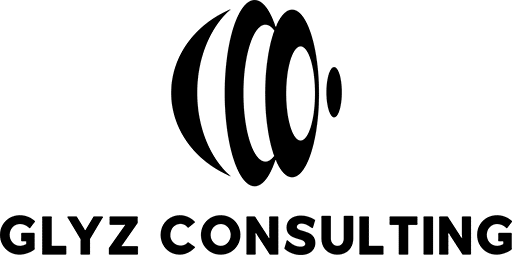
Measuring the Impact of Corporate Strategy on Organizational Performance
Why Measuring Corporate Strategy Matters
Corporate strategy defines the long-term direction of a business, focusing on growth, profitability, and competitive advantage. However, to ensure that a corporate strategy is delivering the desired outcomes, it’s crucial to measure its impact on organizational performance. Without accurate measurement, it becomes difficult to determine whether the strategy is driving progress or if adjustments are needed.
In this blog, we’ll explore the key performance indicators that businesses can use to measure the effectiveness of their corporate strategy and how these metrics provide valuable insights into overall organizational performance.
The Role of KPIs in Measuring Corporate Strategy
What Are KPIs?
Key Performance Indicators (KPIs) are measurable values that demonstrate how effectively a company is achieving its business objectives. KPIs can track various aspects of business performance, such as financial growth, operational efficiency, customer satisfaction, and employee engagement. In the context of corporate strategy, KPIs serve as benchmarks to measure progress toward strategic goals.
By regularly monitoring KPIs, businesses can identify trends, make informed decisions, and adjust their strategy as needed to stay on track.
1. Financial Performance Metrics
Revenue Growth
Revenue growth is one of the most direct indicators of corporate strategy success. If a company’s strategy is focused on expanding into new markets or launching new products, measuring revenue growth will reveal whether those efforts are translating into increased sales and profitability.
Tracking revenue over time allows businesses to assess the impact of strategic initiatives and determine whether they are contributing to long-term financial health.
Profit Margins
Profit margins are another critical financial KPI that helps measure the efficiency of a corporate strategy. Even if revenue is growing, a company may not be achieving its financial goals if profit margins are shrinking. Monitoring both gross and net profit margins provides insights into how well the company is managing costs and resources relative to its revenue.
For businesses focused on cost leadership or operational efficiency, improving profit margins is a key indicator of strategic success.
2. Operational Efficiency Metrics
Cost Reduction
A common corporate strategy objective is to reduce operational costs without sacrificing quality or performance. To measure the impact of cost reduction initiatives, businesses can track metrics such as cost of goods sold (COGS), overhead, and supply chain expenses.
By comparing costs before and after implementing strategic initiatives, companies can assess whether they achieve greater operational efficiency and optimise resource allocation.
Productivity and Output
Operational strategies aimed at improving productivity can be measured by tracking output metrics, such as units produced per hour, revenue per employee, or project completion rates. These metrics provide insight into whether the company is maximizing its resources and delivering products or services efficiently.
Improvements in productivity can indicate that the corporate strategy is successfully streamlining operations and driving growth.
3. Customer-Centric Metrics
Customer Satisfaction (CSAT)
For strategies focused on customer experience, customer satisfaction (CSAT) is a key metric to measure. CSAT scores are typically gathered through surveys that ask customers to rate their satisfaction with a product or service. High satisfaction levels can indicate that the company’s strategy is meeting customer needs and building loyalty.
Improving CSAT over time suggests that the corporate strategy is effectively enhancing the customer experience and driving long-term retention.
Net Promoter Score (NPS)
Net Promoter Score (NPS) measures customer loyalty by asking customers how likely they are to recommend the company to others. NPS is a valuable metric for companies whose corporate strategies involve building strong customer relationships and growing through word-of-mouth referrals.
A high NPS indicates that customers are not only satisfied but are also likely to act as advocates for the brand, contributing to long-term growth.
4. Innovation and Growth Metrics
Market Share
Market share represents the percentage of an industry’s total sales that a company commands. A growing market share is often a sign that the company’s corporate strategy is successfully positioning it ahead of competitors. This is especially important for businesses that have a strategic focus on market expansion or product innovation.
Tracking market share over time helps companies understand whether they are gaining ground in the competitive landscape and achieving their growth objectives.
Product Development and Launch Success
For companies focused on innovation, the success of new product launches is a critical KPI. Metrics such as time-to-market, product adoption rates, and customer feedback on new products help businesses assess whether their innovation strategies are effective.
By measuring the success of product development initiatives, companies can identify areas for improvement and ensure that their innovation efforts align with market demand.
5. Employee Engagement and Performance Metrics
Employee Engagement Surveys
Employee engagement is a key factor in organizational performance. A corporate strategy that focuses on talent development, company culture, and employee well-being should track engagement levels through regular surveys. High employee engagement often correlates with increased productivity, innovation, and overall organizational success.
If engagement levels are low, it may indicate that the corporate strategy needs to place greater emphasis on creating a supportive, motivating work environment.
Turnover Rates
High employee turnover can be a sign that the company’s corporate strategy is not effectively addressing employee needs. Monitoring turnover rates provides insight into how well the company is retaining talent, which is critical for long-term growth and stability. Reducing turnover through better engagement, development opportunities, and company culture can be an important measure of strategic success.
6. Measuring Strategic Alignment
Balanced Scorecard Approach
The Balanced Scorecard is a strategic management tool that helps organizations measure their performance in a more holistic way. It tracks four key areas:
- Financial performance
- Internal business processes
- Customer satisfaction
- Learning and growth (employee development)
By using the Balanced Scorecard, businesses can ensure that they are tracking a comprehensive set of KPIs that reflect both short-term and long-term strategic goals. This approach ensures that all aspects of the business are aligned with the corporate strategy, leading to more sustainable success.
7. Long-Term Strategic Impact
Sustainability and Corporate Social Responsibility (CSR)
For companies with a focus on sustainability or CSR, tracking metrics such as carbon footprint reduction, energy efficiency, and community impact is essential. These metrics not only reflect the company’s contribution to society but also play a role in shaping its brand reputation and long-term success.
By measuring the impact of CSR initiatives, businesses can determine whether their corporate strategy aligns with their values and resonates with their stakeholders.
Measuring Corporate Strategy for Long-Term Success
Measuring the impact of corporate strategy on organizational performance is essential for ensuring that strategic goals are being met and that the business is on a path to long-term success. By using a combination of financial, operational, customer-centric, and employee-focused KPIs, businesses can gain a clear understanding of how well their strategy is working and where adjustments may be needed.
Regularly tracking and reviewing these metrics allows companies to stay agile, make informed decisions, and continually improve their performance in a rapidly changing marketplace.

FAQ
What are the key metrics to measure the impact of corporate strategy?
Key metrics include revenue growth, profit margins, customer satisfaction, employee engagement, and market share, among others.
How does customer satisfaction reflect corporate strategy success?
High customer satisfaction indicates that a company’s corporate strategy is effectively meeting customer needs, building loyalty, and driving retention.
Why is employee engagement important in measuring strategy success?
Employee engagement is a critical factor in productivity, innovation, and retention. High engagement levels often lead to better organizational performance.
What is the Balanced Scorecard approach?
The Balanced Scorecard is a strategic management tool that measures performance in four key areas: financial performance, internal processes, customer satisfaction, and learning and growth.
How can businesses use KPIs to track strategic alignment?
By setting and monitoring KPIs that reflect both short-term and long-term goals, businesses can ensure that all aspects of the organization are aligned with their corporate strategy.
About Glyz Consulting
We’re specialist in pharma industry digital marketing and customer engagement. At Glyz Consulting we are passionate about bridging the gap between pharmaceutical companies and healthcare professionals. With more than 65+ years of combined experience in crafting strategies that resonate with HCPs, we aim to foster collaborations that ultimately benefit patient care.
Glyz Consulting – Your Parther in Business Excellence
glyzconsulting.com | contact@glyzconsulting.com


